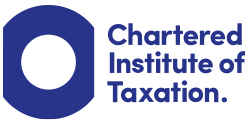With the advent of Auto Enrolment pensions, all Employers are going to become more familiar with the ins and outs of pension tax relief!
Unfortunately just to complicate a complicated system even more there are two fundamental ways that the Employee contributions can be calculated.
If a worker has agreed to the minimum contribution which at the moment is 1% of their “qualifying earnings” (minimum contributions showed here: https://www.thepensionsregulator.gov.uk/en/employers/managing-a-scheme/contributions-and-funding) (qualifying earnings shown here:https://www.nestpensions.org.uk/schemeweb/NestWeb/public/helpcentre/contents/what-are-qualifying-earnings.html) then there are two ways that the employer can deal with this.
With a method called “Relief at Source,” the employer will deduct 0.8% of the qualifying earnings from their after-tax income and send it to the pension provider. They will then gross it up giving them basic rate tax relief at 20%. Higher rate taxpayers will get higher rate tax relief through their tax returns. The NEST pension which many of our clients have chosen uses this method: https://www.nestpensions.org.uk/schemeweb/NestWeb/public/helpcentre/contents/how-should-i-calculate-tax-relief-with-my-earnings-basis.html
However, there is another method called the net pay arrangement where the employer will deduct the full 1% from the employer’s gross pay and the pension Company will not gross it up. When the submission is made to the pension company the payroll operator must be clear about which method is being used otherwise the tax relief will be wrong.
As you can see this is a potential minefield…………….!! That’s why when we were researching how to support our clients with Auto Enrolment we decided that by far the best way forward was to integrate it with our payroll systems. In this way, everything is calculated and submitted in one place and errors can be minimized or eliminated.
Please give us a call for a no-obligation discussion about your auto-enrolment requirements.




